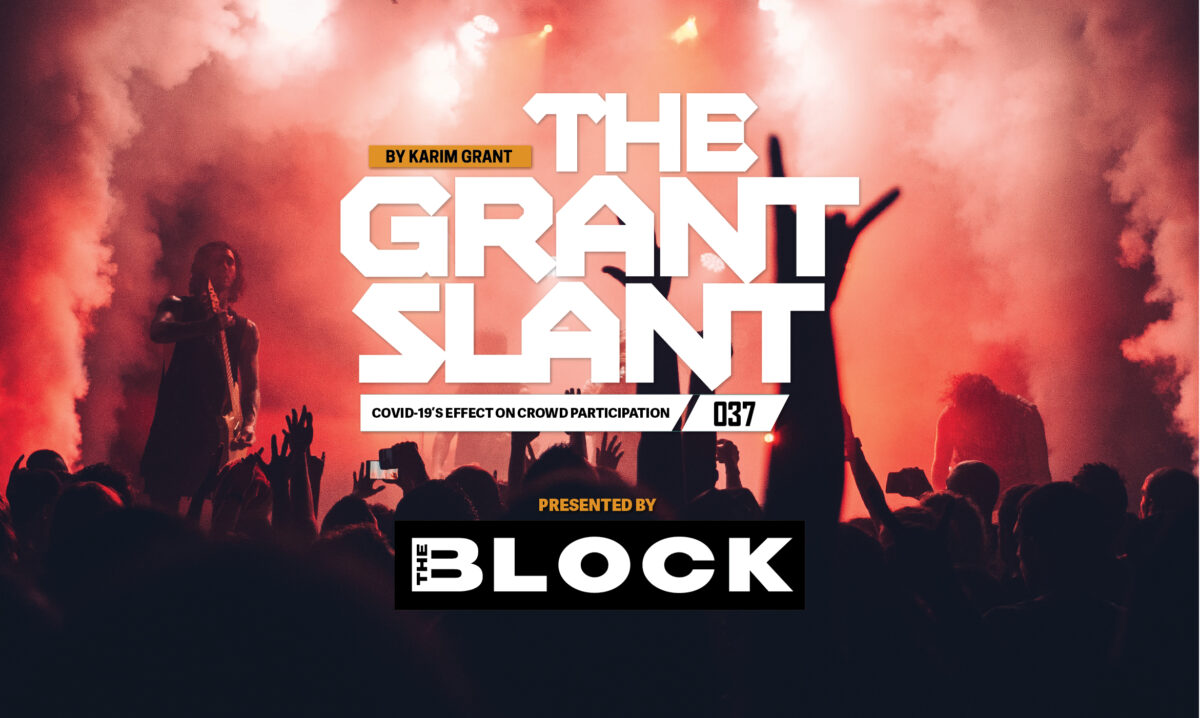1986. In what seems like a prehistoric era, defined by lyrical steadfastness, witty colloquialisms and an endearing level of braggadocio befitting of street disciples who uttered words that neatly framed their experiences it was a reality to entertain at local cyphers, cookouts and block parties with bars like this:
“I don’t bug out or chill or be acting ill / No tricks in ’86, it’s time to build / Eric be easy on the cut, no mistakes allowed / Cause to me, MC means move the crowd / I made it easy to dance to this / But can you detect what’s coming next from the flex of the wrist?” — Eric B. & Rakim, “Eric B. is President”
Although Rakim vowed to have “no tricks in ’86,” there were plenty to choose from in 2020. Unfortunately, no one had the chance to “move the crowd,” as the crowd moved itself, somewhat forcibly by the crippling effects of COVID-19. Government lockdowns around the world prevented people from attending concerts, sporting events and just about every other social gathering once deemed normal.
Gone are the sounds of clamouring fans, inebriated with excitement and overpriced pale ale, now replaced with digitally manufactured crowd noise and cardboard cut-outs…
This new normal meant that even our beloved four major sporting entities in North America (NBA, NFL, MLB, NHL) would be placed on an indefinite hold only to return to crowd-less stadiums and arenas. Gone are the sounds of clamouring fans, inebriated with excitement and overpriced pale ale, now replaced with digitally manufactured crowd noise and cardboard cut-outs of those that once frequented venues.
As of late, crowds have slowly trickled their way back into arenas on a very limited basis, however it is almost certain that last minute buzzer beaters will not be met with thousands of fans storming courts anytime soon.
Artists in the entertainment industry find themselves pivoting as well, finding new creative ways to move the crowd, create content and maintain a semblance of relevance to their fans.
Hip-hop has always had a symbiotic relationship with crowd participation that involves call and response sequences that deliver euphoric rhythms and beats that evoke trance-like head nodding responses, rhythmical gyrations and good old-fashioned fist pumps. Reactions only a live performance could emanate are now thwarted by the pandemic and relegated to in-home Zoom and Instagram live parties attended while donning pyjamas and sipping Tik-Tok-inspired hot chocolate bombs.
Rappers have taken to various social media platforms to engage their lonely audiences, who’ve been yearning for interaction with their favourite performers. These performers have yet to perform in front of 19,000 empty seats like their NBA counterparts, but something tells me we’re not far from that.
Leagues such as the NFL and NBA have experimented with digitized crowd noise – which features the sounds of each home team’s actual fans, recorded at games over the past three to four years – to fill in for real fan noise, as COVID protocols have only allowed for very limited attendance.
Viewers are entertained by their favourite athletes doing what they normally do, albeit in empty arenas. Athletes have a quiet platform to pad their stats on a stage that resembles live practices and highly competitive men’s league runs. The stage has provided a mundane resemblance of competitive matches, especially in the NBA, where players are chalking up incredible numbers as witnessed in last season’s playoffs where Donovan Mitchell and Canadian baller Jamal Murray traded 50-point games like they were online playing PlayStation 5 with their favourite teams.
As a former pro, I know that crowds play an extremely important role in deciding the outcomes of games, as they provide an animated atmosphere, full of jeers, boos and insults hurled at opposing teams. Crowds create a real home court advantage as fans also provide a safe haven for home teams and an extra element opposing teams have to contend with.
With the absence of crowds, the athlete now has the advantage of performing un-bothered by fans, with concentration solely on the game at-hand. Gone are worries about tickets for their families, dancing mascots, the stench of stale popcorn and unruly pestering fans.
That energy that once fuelled musical encores and nail-biting comebacks is nothing but mere emoticons and hashtags…
It’s almost unfathomable to conceive the idea of Kanye West, Drake or Lil Baby performing their classic hits to empty stadiums or concert halls. Yet here we are – an era where fans huddle around their devices watching their favourite artists on random Saturday nights perform on Twitch, YouTube, Instagram and Facebook live.
Producers Swizz Beatz and Timbaland created the Verzuz platform which has pitted artists against each other to showcase their greatest hits one after another streamed over shaky wi-fi connections and mediocre audio. Although the quality has improved since the beginning of the pandemic, it still pales in comparison to real-life performances. As it stands, artists can no longer rely on tour dates to promote their new music, maintain their relevance and moreover make the real money – as streaming revenue doesn’t typically suffice.
Sports and hip-hop have seamlessly drawn upon similar types of crowds to entertain, but as of late, have become mere fragments of what were once favourite past-times. Now they’re more like sound checks and hotly contested practices. Crowds have moved into their respective living rooms. That energy that once fuelled musical encores and nail-biting comebacks is nothing but mere emoticons and hashtags, typed feverishly on overused devices, thumbed by fed up, anxious, COVID-wary fans who have adjusted to this “new normal” for the time being, while hanging on to the idea that this too shall pass.
Well, let’s hope it does anyway.
Photo by Sebastian Ervi from Pexels
This edition of The Grant Slant was presented by CBC’s The Block. Hosted by Angeline Tetteh-Wayoe, The Block is about culture and community – repping the elements of hip-hop from its roots to its far-reaching influence. Listen now.




Comments are closed.